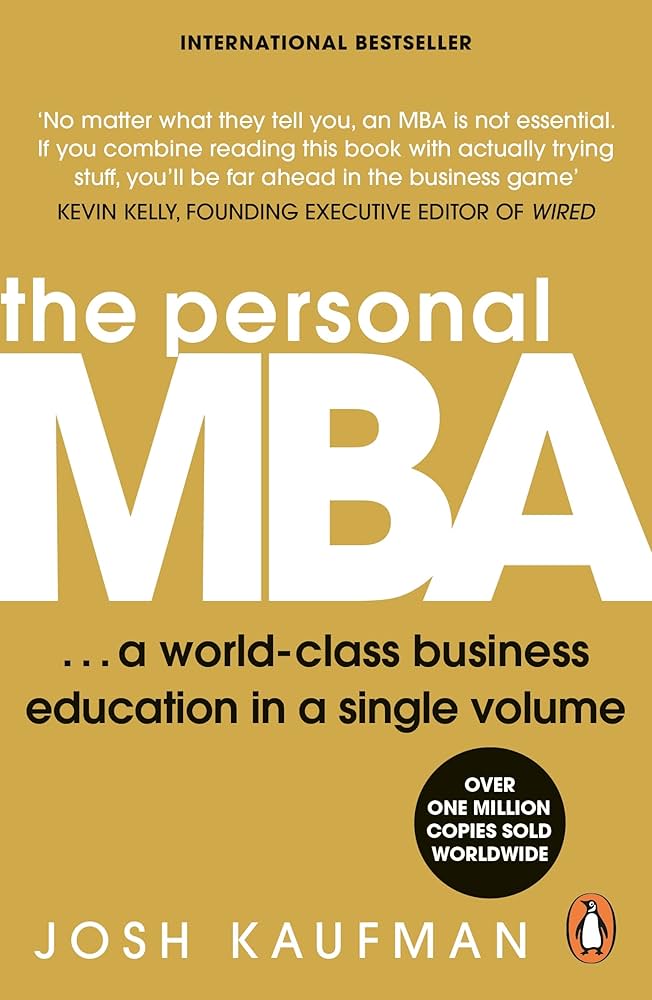🚀 The Book in 3 Sentences
- Explore valuable principles of business that will help you succeed
- Define what your goals are in business and how to execute them
- Learn how to gain trust from customers and convert more sales
🎨 Impressions
The book is very thorough and provides a ton of valuable content worth reading through, helped me gain a clearer insight into business and how systems work.
How I Discovered It
I discovered this book by browsing Google for “best eCommerce books to read” I plan on getting into the eCommerce sector so that’s why I was searching for eCommerce in particular.
Who Should Read It?
Anyone who wants to start a business should read this book as it outlines a lot of valuable principles and strategies for operating a successful business.
☘️ How the Book Changed Me
- Informing me on how to be prepared when situations occurs, setting up fail safes.
- Gave me a new perspective on how a business works and what systems come into play
✍️ My Top 3 Quotes
📒 Summary + Notes
Pareto Principle OR the 80-20 Rule
- In most businesses, 20% of customers account for 80% of annual revenue
- 20% of employees do 80% more of the most valuable work
- You wear less than 20% of the clothing you own 80% of the time
Find the top 20% of things that produce the most value and focus on making them stronger, eliminate the rest.
Progressive Load
Gradually improving a system one step at a time, e.g. finding valuable employees takes time
Friction
Reducing Friction is improving a systems efficiency without losing value
When operating a business it’s important to provide a valuable UX (User Experience), retailers like Amazon go through enormous lengths to minimize the amount of effort it takes for a customer to order and allowing customers to purchase with a single click.
Intentional Friction can sometimes encourage people to behave in a certain way or make a particular decision. For example, adding a small amount of friction to your returns process, like requiring the customer to provide receipt or explain the reason for the return can decrease the number of people who return your product.
The Paradox of Automation
The risks associated with automation
Automation can be a good thing but also a bad thing, let’s say that a company that specialises in AI is producing micro chips to put into military machinery. The company has a factory with machines that produce 1000 chips a minute, each chip cost $200 to make, 1000 x 200 = $200,000 a minute. The chips sell for $500 which is $300 profit x 1000 = $300,000 a minute. Let’s say the system overheats and the chips start to come out fried, within an hour the business would have lost $1,200,000 in direct cost, $30,000,000 in Opportunity Costs, and 31,200,000 in total. Concluding that automation is great but can be very costly if there are bugs in the system.
The best way to prevent automation errors is through regular sampling and testing.
Standard Operating Procedure
SOP is a predefined process for common issues, informing you on what to do in certain situations.
Benefits
- Reduces Friction – Spend less time reinventing the wheel
- Relieves Stress – Provides everyone with a guide on what to do
- Save Time – Spend less time thinking and more time executing
- Help new employees or partners learn how you work and bring them up to speed.
Update with 80-20 principle
Review your SOPs on a periodic basis to find any outdated, wasteful, or unnecessary work (80-20)
Fail-safes
Plan in advance for situations, prevention is key.
A fail-safe is a backup system to prevent or allow recovery with the primary system failure.
An example of a fail-safe would be a system back up of a websites data, the back up will be held on a device or in a cloud so that if any data is lost it can be recovered.
Aeroplanes have a system that senses a failure in cabin pressure, which deploys face masks attached to an oxygen tank, preventing people from losing consciousness.






Leave A Comment